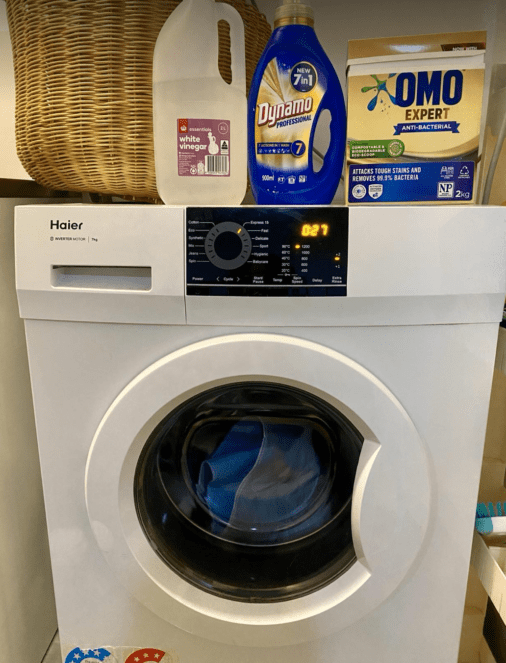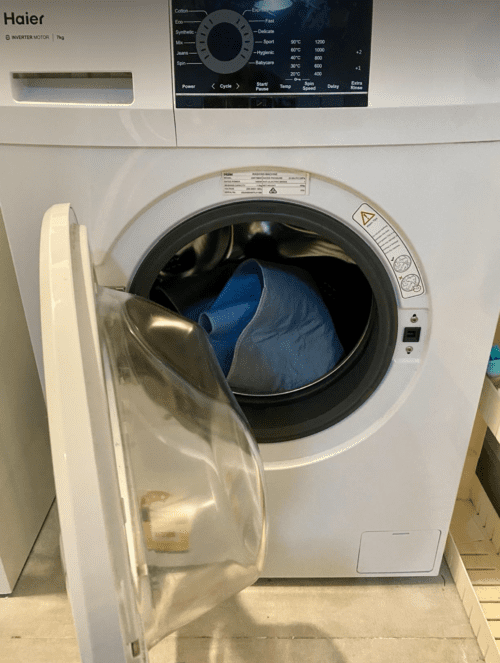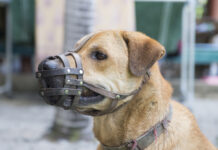
Last Updated on January 31, 2024 by Dogs Vets
How to Remove Urine Smell from Reusable Puppy Pee Pads
Puppy training can be a rewarding journey, but dealing with the persistent odor of urine on reusable pee pads is a common challenge.
In this comprehensive guide, we’ll delve into effective ways to banish that unpleasant smell and keep your home fresh.
From washing techniques to leveraging the power of sunlight, we’ve got you covered. Let’s dive in!
Reusable puppy pee pads are a convenient and eco-friendly option for potty training your furry friend. However, over time, these pads can develop a lingering urine smell that can be quite unpleasant.

Fortunately, there are several effective methods you can use to remove the urine smell and keep your reusable puppy pee pads fresh and odor-free.
1. Pre-Treat the Pee Pads
Before washing the reusable puppy pee pads, it’s important to pre-treat them to help eliminate the urine smell.
Start by rinsing the pads with cold water to remove any excess urine. Then, apply a mixture of equal parts white vinegar and water to the soiled areas.
Let the solution sit for about 10 minutes to break down the urine odor.
2. Wash with Odor-Neutralizing Detergent
After pre-treating the pee pads, it’s time to wash them. Use a mild detergent that is specifically designed to neutralize odors.

Avoid using fabric softeners or bleach, as these can leave residue and mask the urine smell rather than eliminating it. Wash the pads in warm water according to the manufacturer’s instructions.
3. Add Baking Soda to the Wash
Baking soda is a natural odor absorber and can be effective in removing urine smells from reusable puppy pee pads. Add half a cup of baking soda to the wash cycle along with the detergent. The baking soda will help neutralize any remaining odors and leave the pads smelling fresh.
4. Dry Thoroughly
Properly drying the reusable puppy pee pads is essential to prevent any residual urine smell. If possible, hang the pads outside in direct sunlight, as the UV rays can help kill bacteria and eliminate odors.
If outdoor drying is not an option, use a dryer on a low heat setting or air dry the pads indoors. Ensure that the pads are completely dry before using them again.
5. Use Enzyme-Based Cleaners
If the urine smell persists even after washing and drying the pads, you may need to use an enzyme-based cleaner. These cleaners contain enzymes that break down the urine molecules and eliminate the odor at its source.
Follow the instructions on the cleaner and apply it to the soiled areas of the pee pads. Allow the cleaner to sit for the recommended amount of time before washing the pads again.
6. Store Properly
When not in use, it’s important to store the reusable puppy pee pads properly to prevent the buildup of urine smell. Make sure the pads are completely dry before folding or rolling them up for storage.
Avoid storing them in airtight containers, as this can trap moisture and contribute to odor development. Instead, choose a well-ventilated area or use a breathable storage bag.
7. Regularly Rotate and Replace
Even with proper cleaning and maintenance, reusable puppy pee pads will eventually wear out and lose their effectiveness in controlling urine odor. It’s important to regularly rotate and replace the pads to ensure maximum freshness and hygiene.
Having multiple sets of pads can make this process more convenient, allowing you to always have clean pads available while others are being washed.

By following these tips, you can effectively remove urine smell from reusable puppy pee pads and keep them fresh and odor-free.
Remember to clean the pads promptly after each use to prevent the urine odor from becoming deeply embedded.
With proper care, your reusable puppy pee pads will continue to serve as a reliable tool in your potty training journey.
Battling Persistent Odors: A Second Round of Washing
Sometimes, the first wash may not be enough, especially if the urine smell persists. Let’s explore a secondary washing technique that can make a significant difference.
Second Wash with White Vinegar Only
If the odor lingers, initiate a second wash with cold water and 1/4 to 1/2 cup of white vinegar. Skip the detergent this time; let the vinegar work its magic.
Reinforcing with Fabric Softener
In the fabric softener compartment, add another 1/4 cup of white vinegar. A double rinse follows suit to ensure a thorough cleanse.
Harnessing the Power of the Sun: Nature’s Deodorizer
The sun is a natural ally in the battle against lingering odors. Learn how to use sunlight to your advantage in removing urine smells.
Drying Pee Pads in the Sun
After washing, hang the pee pads in direct sunlight for drying. The sun not only dries but also acts as a natural deodorizer, leaving your pads smelling as fresh as a sunny day.
Conclusion
Banishing urine odors from reusable puppy pee pads doesn’t have to be a daunting task. By incorporating these washing techniques and harnessing the power of sunlight, you can keep your home smelling clean and welcoming.
Say goodbye to unpleasant pet odors and hello to a fresh living space.
FAQs (Frequently Asked Questions)
Can I use any detergent for washing puppy pee pads?
-
- A: While any detergent can be used, opting for one with a mild and neutral scent is recommended.
How often should I wash reusable pee pads?
-
- A: Washing every 2-3 days is ideal to prevent odors from setting in.
Is it safe to use white vinegar on pee pads?
-
- A: Yes, white vinegar is safe and acts as a natural deodorizer without harmful chemicals.
Can I machine dry the pee pads after washing?
-
- A: While it’s possible, air-drying in the sun is more effective in eliminating odors.
What if my washing machine doesn’t have a double rinse option?
-
- A: Running an extra rinse cycle manually can achieve a similar result.
Will the sunlight fade the pee pads’ colors?
-
- A: Hanging the pads in indirect sunlight should minimize any potential color fading.
Can I add essential oils for a pleasant scent?
-
- A: It’s not recommended, as some dogs may be sensitive to strong scents. Stick to vinegar for a neutralizing effect.
Fact Check
We hope you enjoyed reading this article. What are your thoughts on the topic?
“At [Dogsvets.com], our goal is to bring you the most accurate and up-to-date information on all things pet-related.
If you have any additional insights or would like to advertise with us, don’t hesitate to get in touch.
If you notice any errors or discrepancies in our content, please let us know so we can correct them.We welcome your feedback and encourage you to share this article with others.”
















